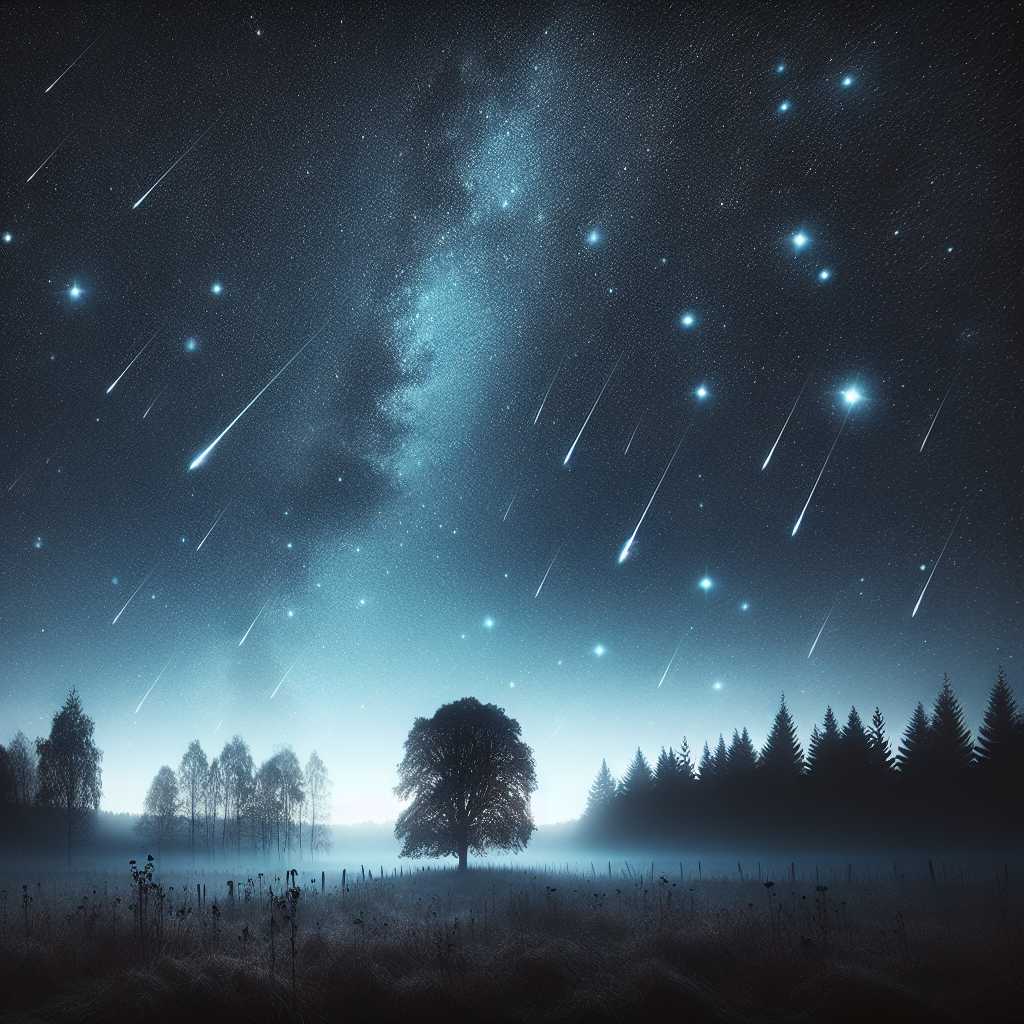Example Article
An Introduction to the Orionids Meteor Shower
Every autumn, stargazers around the world turn their eyes towards the constellation Orion to witness one of the most reliable and captivating meteor showers: the Orionids. Occurring annually between late October and early November, this meteor shower is renowned for its bright, fast meteors that streak across the night sky, often leaving glowing trails that linger for seconds after their fiery descent. Unlike some meteor showers that peak briefly, the Orionids offer an extended viewing window, making them accessible to casual observers and dedicated astronomers alike.
The meteors originate from debris left behind by Halley’s Comet, one of the most famous comets in human history. As Earth passes through this cosmic dust trail, particles enter our atmosphere at speeds exceeding 66 kilometres per second, igniting spectacular streaks of light. While the Perseids in August are more famous for their high meteor count, the Orionids are notable for their velocity and brightness, attributes that make them particularly striking against the dark backdrop of autumn skies.
This shower’s connection to Halley’s Comet adds a fascinating historical and scientific dimension. Halley’s Comet is visible from Earth roughly every 76 years; however, its debris continues to intersect Earth’s orbit annually in the form of these radiant meteors. The Orionids thus serve as a yearly reminder of our solar system’s dynamic nature and the enduring legacy of cometary visitors.
Scientific Significance and Observation Techniques
Beyond their aesthetic appeal, meteor showers like the Orionids play a valuable role in advancing scientific understanding. By studying meteoroid trajectories and compositions, scientists gain insights into the physical properties of comets and the early solar system. The high entry speed of Orionid meteors also provides unique data on atmospheric interactions at extreme velocities.
Modern observation methods combine traditional naked-eye watching with sophisticated instruments such as radar and specialised cameras. Radar systems detect ionised trails left by meteoroids even during daylight or cloudy conditions, broadening opportunities for data collection. Meanwhile, high-speed cameras capture detailed images that help determine meteor sizes and fragmentation patterns.
Citizen science projects have also flourished around meteor showers. Enthusiasts equipped with smartphones and simple apps can contribute timing and frequency data to global databases, enhancing collective knowledge. This collaborative approach not only enriches scientific research but also fosters public engagement with astronomy.
Cultural Impact and Mythological Connections
Meteor showers have captivated human imagination for millennia, often inspiring myths and cultural rituals. The Orionids are no exception; their radiant display near the prominent constellation Orion has linked them to various legends across different cultures. In some traditions, meteors symbolize messages from ancestors or omens of change.
In ancient Greek mythology, Orion was a mighty hunter placed among the stars by Zeus after his death. The appearance of bright meteors near this figure in the sky has been interpreted as celestial arrows or signs of his eternal presence. Similarly, indigenous cultures around the world have woven meteor events into oral histories and ceremonies.
Today, these cultural connections enrich our appreciation of meteor showers beyond their scientific value. They remind us that observing the night sky is not only an act of inquiry but also a deeply human experience tied to storytelling, wonder, and shared heritage.
Planning Your Viewing Experience for This Year’s Orionids
As we move through August 2025, planning ahead for the upcoming Orionids peak in late October is essential for optimal viewing. The shower typically reaches its maximum activity around October 21-22 each year. Observers should seek out dark locations far from city lights to fully appreciate the bright streaks.
Because Orion rises late at night during this period in northern latitudes, prime viewing time generally falls between midnight and dawn. Comfortable clothing and patience are key; meteor watching can require extended periods outdoors under chilly skies. Using reclining chairs or blankets enhances comfort while scanning wide swathes of sky.
For those interested in photography, long-exposure techniques can capture multiple meteors in a single frame along with constellations like Orion’s Belt. Planning around moon phases is equally important—the dimmer the moonlight during peak nights, the better the visibility. This year’s lunar calendar suggests favourable conditions with a waning crescent moon near peak activity.
Conclusion: Embracing Cosmic Connections Through Meteor Watching
The Orionids meteor shower stands as a remarkable event where science, culture, and natural beauty converge. Its annual return offers not only an opportunity to witness celestial fireworks but also to connect with cosmic history through Halley’s Comet’s ancient remnants. Scientific observations deepen our understanding of both atmospheric physics and cometary composition while citizen participation democratizes astronomy.
Culturally, the enduring myths surrounding Orion enrich our experience by linking us to generations past who gazed at similar skies with wonder and curiosity. As we prepare for this year’s display amid autumn’s crisp nights, embracing these moments can foster both knowledge and awe.
Ultimately, observing meteor showers like the Orionids invites us to reflect on our place within an expansive universe—where fleeting streaks of light illuminate not only the heavens but also humanity’s enduring quest to explore and understand.
Notes
- The Orionids typically produce about 20 meteors per hour at peak under ideal conditions.
- Halley’s Comet debris causes two annual meteor showers: the Orionids in October-November and Eta Aquariids in May.
- Orionid meteors travel at approximately 66 km/s (about 147,000 mph), making them some of the fastest meteors observed.
- The last visible pass of Halley’s Comet was in 1986; it will return again in 2061.
- Meteor showers can provide clues about parent bodies’ composition without direct spacecraft missions.

